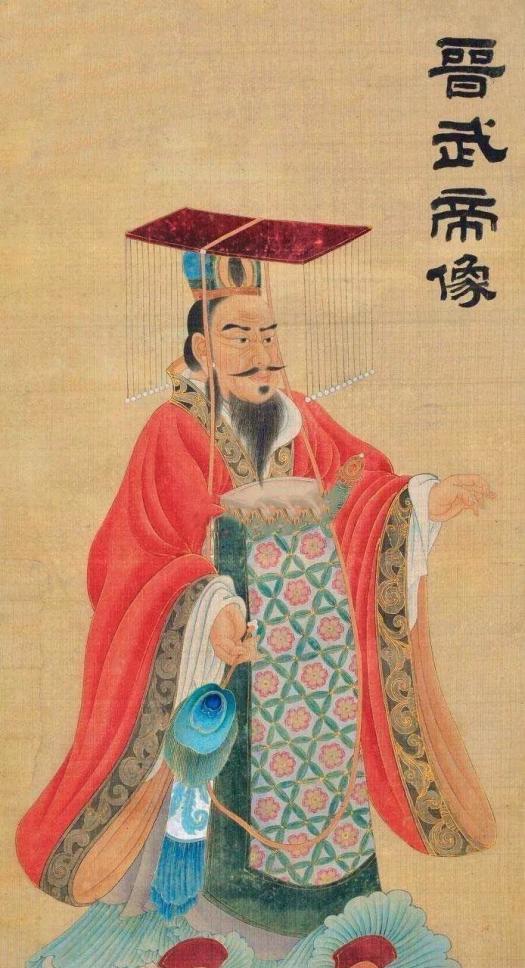
Sima Yan, Emperor Wu of Jin
In the winter of the second year of Cao Wei Xianxi (266 AD), Sima Yan forced the Wei Yuan Emperor Cao Huan to take the throne, established the Jin Dynasty, changed the Yuan Tai Dynasty, and declared the cao Wei Empire to fall.
Emperor Sima Yan of the Jin Dynasty demoted Cao Huan to the title of King of Chen Liu (陈留王) and his fief was at Chen Liu (陳留; present-day Chen Liu, Kaifeng, Henan).
Sima Yan was still very polite to Cao Yan, allowing Cao Yan to still enjoy special treatment such as using the Tianzi Banner, preparing a five-hour deputy car, continuing Cao Wei Zhengshuo, sacrificing heaven and earth, maintaining the old system of the Cao Wei period, writing to the imperial court without being a subject, and accepting edicts without praying.
The descendants of Cao Wei's clan also enjoyed the same treatment as usual in the ritual system, the food of thousands of households, and the retention of the old capital of the State of Wei , Yecheng ( now part of Linzhang , Hebei ) , but they had no right to inquire about state affairs.
Stills of Cao Wan
Even so, after all, from emperor to prince, as long as he left Chen Liuguo, Cao Huan still had to pay tribute to the emperor of the Jin Dynasty.
Chen Liuguo went through the Dynasties of the Western Jin Dynasty, the Eastern Jin Dynasty, and the Southern Song Dynasty, and lasted until the Southern Qi period of the Southern Qi Dynasty, when the feudal state was abolished, and the nine kings enjoyed the kingdom for 214 years.
Cao Huan died after reigning for thirty-eight years, and was succeeded by his son Cao Guo;
Cao Guo reigned for twenty-four years, passing the throne to Cao Cao's grandson Cao Li;
Cao Li reigned for thirty-three years, and after his death passed on the throne to his son Cao Hui;
Cao Hui reigned for sixteen years, and after his death passed on to his son Cao Ling's birthday;
Cao Ling reigned for twenty-six years and passed the throne to his son Cao Qiansi.
Cao Qiansi reigned for twelve years, and after his death passed the throne to his younger brother Cao Qianxiu;
Cao Qianxiu reigned for forty-two years, passing the throne to his son, the eighth king of Chen Liu, Cao Milling;
Cao Qiao reigned for twelve years, and after his death passed the throne to his son Cao Cang, who reigned for six years and the feudal state was abolished by the Southern Qi Emperor.
King Liu of Chen was first given the title of Liu Xie, the emperor of Han, by Cao Pi, who usurped the Han Dynasty, and Sima Yan made Cao Huan the Prince of Chen Liu, which vaguely implied a sense of ridicule and ridicule.
In the last year of the Western Jin Dynasty, the Yongjia Rebellion broke out, and the Chen Liu family also crossed the south with the Jin Dynasty royal family.
Seeing that the Sima family was declining, Cao Cao's descendant Cao Qian , the Prince of Chenliu , finally found an opportunity to shame his ancestors.
Cao Qian, the Prince of Chenliu, led his courtiers to persuade Sima Dewen, the late Jin Emperor, to cede the throne to Liu Yu, which was a revenge for the old ancestor Cao Yi for being forced to take the throne.
Qi Gaozu Xiao Daocheng portrait
In the last year of the Liu Song Dynasty, The Chen Liu King Cao Yue repeated the old trick and took the lead in persuading Emperor Shun of Song to give Xiao Daocheng the throne.
After Xiao Daocheng established the Southern Qi Dynasty, he was not so kind to the descendants of Cao Wei.
In August of the first year of the Jianyuan Dynasty (479), Chen Liuguo was abolished.